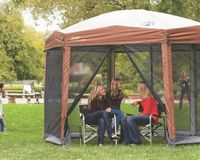
When shopping for outdoor gear and clothing, understanding the sustainability features of products helps you make informed decisions that reduce your environmental impact. From animal welfare to recycled materials, outdoor brands are increasingly focusing on sustainable production practices.
By understanding these sustainability features and taking care of your existing gear, you can contribute to a more sustainable outdoor lifestyle. When shopping, remember that these choices, although small, collectively have a big impact on the environment, workers, and the planet.
Animal Welfare in Outdoor Gear
When shopping for outdoor gear that involves animal-derived products, it's important to consider certifications that ensure ethical treatment of animals and responsible sourcing practices. Here are some key animal-related standards to look for:
Responsible Down Standard (RDS)
- The RDScertification guarantees that the down and feathers in products like jackets, sleeping bags, and booties are sourced responsibly. It ensures that the ducks and geese involved were treated humanely, prohibiting practices such as live plucking and force feeding. If you see the RDS label, you can trust that the down comes from farms adhering to strict animal welfare guidelines.
Responsible Wool Standard (RWS)
- The RWScertification ensures that wool used in outdoor products like base layers and jackets comes from sheep raised on farms that meet high animal welfare standards. These farms are required to treat animals with care, providing proper living conditions and preventing harmful practices like mulesing. The certification also focuses on environmental sustainability in wool production.
Recycled Down and Wool
- Using recycled downand recycled wool helps reduce the environmental impact of animal-derived materials. By reusing down and wool from old products, the industry reduces its reliance on new sources, which is not only better for animals but also reduces carbon emissions associated with animal husbandry. Look for gear and clothing made with recycled down or wool for an environmentally friendlier option.
Leather Working Group (LWG)
- The LWGcertification doesn't focus on animal welfare directly, but it does monitor the environmental management practices of leather producers. The certification grades leather suppliers on their environmental stewardship, with grades ranging from "Gold" to "Pass." If you want to ensure that the leather in your hiking boots or gear was sourced from a producer with strong environmental practices, look for the LWG certification.
Vegan and Organic Standards
- While not specifically related to animal welfare, veganproducts (which contain no animal-derived materials) and organic products are increasingly popular in the outdoor gear industry. Vegan products, such as synthetic footwear, are cruelty-free and avoid the use of animal products altogether. Organic certifications, commonly found in outdoor food products, may also apply to certain synthetic footwear and other gear.
By understanding and looking for these certifications, you can make more informed choices that align with your values regarding animal welfare. Whether you're purchasing down sleeping bags, wool layers, or leather boots, these standards help ensure that your gear is produced ethically and sustainably.
Fair Trade in Outdoor Gear and Apparel
Fair Trade principles, widely known in the food and coffee industry, have expanded to a variety of other products, including outdoor gear and apparel. These principles focus on promoting ethical business practices, fair wages, and safe working conditions for workers, especially in developing countries. By supporting Fair Trade certified products, you contribute to a more equitable and sustainable global economy. Here's an overview of how Fair Trade applies to outdoor gear and clothing:
What is Fair Trade?
Fair Trade is a certification system that ensures products are produced under fair conditions. The goal is to improve the livelihoods of farmers and workers by ensuring they receive fair wages, work in safe environments, and contribute to their community’s empowerment. Fair Trade also promotes environmental sustainability, encouraging practices that protect ecosystems and reduce harm to the planet.
Organically Grown Cotton: A More Sustainable Choice
Conventional cotton production can have significant environmental and health impacts due to the extensive use of synthetic pesticides, herbicides, and fertilizers. Organic cotton farming, on the other hand, offers a more sustainable alternative with a smaller environmental footprint. Here’s a look at how organically grown cotton is better for the planet:
Environmental Benefits of Organic Cotton
- No Synthetic Chemicals:Organic cotton is grown without synthetic pesticides, herbicides, or chemical fertilizers. This reduces the risk of contamination in the soil and water, benefiting ecosystems and local wildlife.
- Soil Health:Organic cotton farming emphasizes soil health by using crop rotation, composting, and other techniques that help preserve soil fertility and prevent erosion.
- Water Conservation:Organic cotton farms often use more sustainable irrigation techniques and tend to use less water overall compared to conventional cotton farming.
- Lower Carbon Emissions:Organic cotton farming generally has lower carbon emissions than conventional cotton production. This is due to the lack of synthetic chemical inputs and more sustainable farming practices.
To ensure that cotton is grown according to organic standards, farmers must meet specific certification criteria set by organizations like the USDA Organic program or Global Organic Textile Standard (GOTS). When shopping for cotton products, look for these certifications or labels on the packaging to confirm the cotton was grown organically.

bluesign®: Ensuring Sustainability in Textile Production
The bluesign® system is a comprehensive approach to sustainable textile production, aiming to reduce the environmental and health impacts of the manufacturing process. It operates at every stage of the supply chain, from raw materials to finished products, ensuring that harmful substances are eliminated and safety standards are met. Here’s how it works:
- Resource Use:Efficiency is a primary concern in the bluesign® system. By working directly with factories, bluesign® helps companies optimize their use of water, energy, and chemicals, leading to significant reductions in resource consumption. This makes the entire production process more sustainable and less wasteful.
- Occupational Health and Safety:Worker safety is a core aspect of the bluesign® certification. The system helps factories eliminate hazardous chemicals from the production process and implement safer practices to protect the health of workers involved in textile production.
- Water and Air Emission:Bluesign®-approved factories must meet strict environmental regulations concerning emissions. They are required to control and minimize water and air pollution, ensuring that their operations do not harm the surrounding environment or the communities nearby.
- Consumer Safety:The bluesign® system also prioritizes chemical safety for consumers, ensuring that the textiles are free from harmful substances. The certification guarantees that the final product is safe for use, whether it’s clothing, footwear, or gear.
bluesign®-Certified Materials and Products
When you see the bluesign® logo on a product, it means that the item has been produced with rigorous attention to environmental, health, and safety standards. The bluesign® certification ensures that the entire production process has been scrutinized to minimize harmful impacts.
Recycled Materials in Outdoor Gear and Apparel
Recycling plastic bottles into polyester for clothing and gear is one of the most recognized advancements in product sustainability. Recycled polyester can be found in a variety of items, including base layers, outerwear, and backpacks—essentially, any product that traditionally uses virgin polyester. Some manufacturers even highlight how many bottles were repurposed to make a specific product.
Although less common than polyester, recycled nylon is also gaining traction and is used in a wide range of clothing and gear.
Benefits of Recycled Materials
- Reduces Raw Material Usage: Utilizing recycled materials decreases the demand for virgin resources.
- Lower Environmental Impact: Manufacturing with recycled materials often consumes less energy and water than using virgin alternatives.
- Decreases Waste: This process helps minimize the amount of plastic and other materials sent to landfills.
Opting for products made with recycled materials is a step toward more sustainable consumption in outdoor gear and apparel.
Forest Stewardship Council™ (FSC) Certification
The Forest Stewardship Council™ (FSC) certification ensures that wood and wood-based products—such as paper, natural rubber, and cellulosic fibers like lyocell—are produced under rigorous standards of responsible forest management. This certification addresses multiple areas of concern, including:
- Environmental Stewardship:Ensuring forests are managed sustainably.
- Legal and Regulatory Compliance: Adherence to laws and regulations.
- Indigenous Rights:Respect for the rights and traditions of Indigenous peoples.
- Social and Economic Well-being:Supporting workers and local communities.
FSC Labels You Might Encounter
- FSC 100%:All materials in the product come entirely from FSC-certified forests.
- FSC Recycled:All materials are sourced from recycled or reclaimed content.
- FSC Mix:Materials come from a combination of FSC-certified, recycled, or "controlled wood." Controlled wood minimizes the risk of materials from unacceptable sources, such as forests with high conservation value or areas converted to non-forest uses.
Why It Matters
The FSC certification can also apply to wood-based product packaging, helping consumers make environmentally responsible choices. Look for the FSC logo when shopping to ensure that your purchases support sustainable practices.
Product Sustainability Tips
Repair Your Gear
- Extending the lifespan of your gear is one of the most effective ways to reduce waste and environmental impact. Follow care and repair instructions specific to your products, invest in repair kits when available, and seek out reputable services for more extensive fixes. Some common resources and guides include:Tent repairs;Sleeping bag care;Rainwear maintenance, including restoring durable water repellency (DWR);Bike maintenance basics;Ski and snowboard base repairs;Climbing rope care
Sell, Trade, or Buy Used Gear
- Passing along gear you no longer need benefits everyone: For the seller: Regains storage space and possibly earns some cash.For the buyer: Saves money and gains access to high-quality items.For the planet: Reduces demand for virgin resources.Explore resale marketplaces, trade-in programs, or local gear swaps to participate in this eco-friendly cycle.
Seek Third-Party Certifications
- Certifications by independent organizations ensure sustainability claims are credible. Examples of standards to look for include certifications related to environmental impact, fair labor practices, and responsible sourcing. Beware of vague terms like "eco-friendly" or "green" that lack supporting details or verifiable standards.
Review Brand Sustainability Reports
- Many outdoor brands provide annual sustainability reports detailing their efforts, third-party certifications, and environmental initiatives. Reviewing these reports can help you make informed purchasing decisions while supporting brands committed to sustainable practices.
By prioritizing repair, resale, certifications, and informed purchases, you can reduce your environmental footprint while enjoying the great outdoors responsibly.












